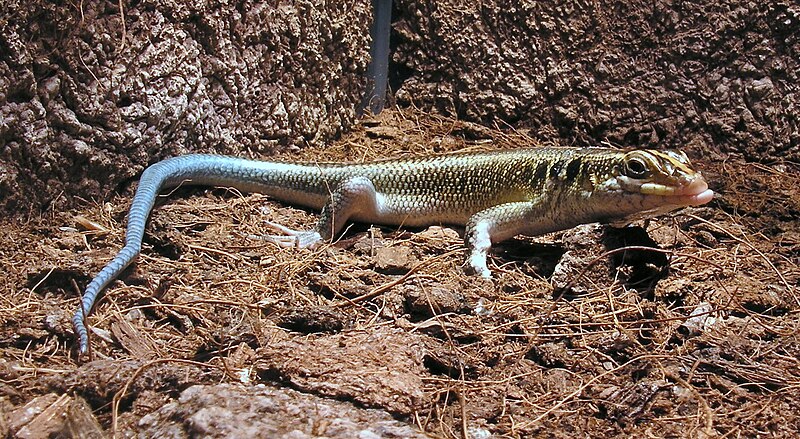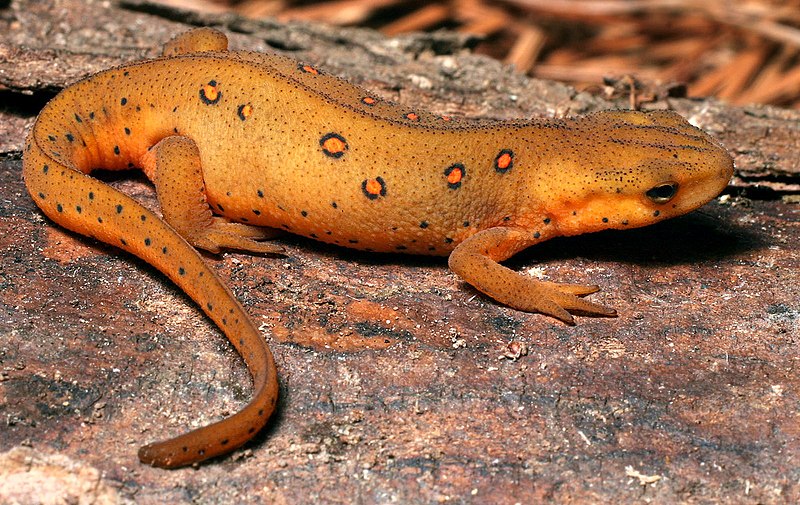Earthworms are one of the most nutritious food items available for amphibians, and for those reptiles, invertebrates and fishes that will take them. Collecting them (in one piece!) can, however, be frustrating, and they are quite costly at bait stores. One trick I stumbled upon years ago has greatly simplified the task of supplying my collection with earthworms – I hope you find it useful. Read More »
Category Archives: Field studies and notes
Feed SubscriptionProfessional Herpetological Organizations and Journals – Part 1
 I have belonged to local herpetological societies since childhood, and continue to be involved with several today. A few, such as the NY Turtle and Tortoise Society, nicely serve both professional herpetologists and lay people…but whatever their leanings, all are of immense value. Today I’d like to highlight some professional groups and journals that are open to everyone.
I have belonged to local herpetological societies since childhood, and continue to be involved with several today. A few, such as the NY Turtle and Tortoise Society, nicely serve both professional herpetologists and lay people…but whatever their leanings, all are of immense value. Today I’d like to highlight some professional groups and journals that are open to everyone.
The Bronx Zoo’s Reptile House has copies of the “Big Three” – The Journal of Herpetology, Copeia and Herpetologica – dating back to the first issues of each, and in my 21 years working there I think I went through most of them! Membership tends to be expensive (student rates are often available), so I summarize research notes from current issues and post them here on occasion (please see articles below). Read More »
African Rainbow Skinks Now Breeding in Florida – Giant Ameivas Spreading
 A breeding population of African Five-Lined or Rainbow Skinks, Trachylepis (formerly Mabuya) quinquetaeniata, has been discovered in Port St. Lucia, Florida, bringing the total number of exotic herps known to be established in the USA to 66. The Giant or Green Ameiva, or Jungle-Runner (Ameiva ameiva), known to the state since 1954, seems to be expanding its range.
A breeding population of African Five-Lined or Rainbow Skinks, Trachylepis (formerly Mabuya) quinquetaeniata, has been discovered in Port St. Lucia, Florida, bringing the total number of exotic herps known to be established in the USA to 66. The Giant or Green Ameiva, or Jungle-Runner (Ameiva ameiva), known to the state since 1954, seems to be expanding its range.
Florida’s Newest Exotic
Rainbow Skinks, which are native to a broad belt of Sub-Saharan Africa stretching from Senegal to Kenya, are the newest of Florida’s many exotic animals. Well-known in the US pet trade, the recently discovered population seems limited to a weedy lot near a now-defunct reptile importing business. Past reports of dead and dying skinks found on the importer’s property point towards the all-too-common source of the new arrivals. Read More »
The Eastern Newt – the Many Subspecies and Hybrids of a Popular Pet – Part 2
Quite a few subspecies of the Eastern Newt (Notopthalmus viridescens) have made their way into the pet trade. All are hardy, interesting and possible to breed in captivity. Please see Part 1 of this article for information on their care and feeding. The following descriptions and habitat information should help in identifying your newt. However, natural and captive-generated hybrids can complicate the process – please write in if you need assistance. Read More »
The Eastern Newt – the Many Subspecies and Hybrids of a Poplar Pet – Part 1
 The Eastern Newt (Notophthalmus viridescens) is, in most parts of the USA, the salamander most likely to be encountered in either the wild or in pet stores. It is a wonderful species for beginning hobbyists, yet has such a complicated life style that even long-experienced herpetologists remain interested in keeping them.
The Eastern Newt (Notophthalmus viridescens) is, in most parts of the USA, the salamander most likely to be encountered in either the wild or in pet stores. It is a wonderful species for beginning hobbyists, yet has such a complicated life style that even long-experienced herpetologists remain interested in keeping them.
Many unusual hybrids, varying color phases and related species have found their way into captivity. Today I’ll touch on their care and feeding; I’ll discuss some of the many types available in Part 2. Read More »
 That Reptile Blog – Reptile, Amphibian and Exotic Pet Care and Information
That Reptile Blog – Reptile, Amphibian and Exotic Pet Care and Information
